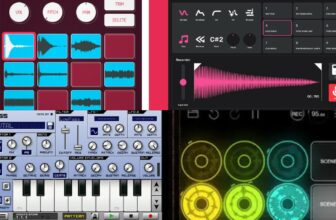How Much Data Does Apple Music Use?

Apple Music’s data usage depends on the quality of the music you listen to, and, on average, it can consume about 2 MB per minute. However, actual consumption can differ based on the audio quality, streaming type, and personal usage habits.
Contents
Key Takeaways
- Apple Music’s usage can vary, with higher-quality streams consuming more data. Around 1-2 MB per minute is a general average when using cellular data.
- There are several ways to lower your data use. Downloading songs for offline play, adjusting stream quality, turning off the animated album art, and using Wi-Fi instead of mobile data can all contribute to data savings.
- Apple Music has settings that can be managed to help save data. For instance, enabling ‘Data Saver’ will reduce streaming quality, hence lowering the data used.
Understanding Data Consumption by Apple Music
Apple Music is known for delivering high-quality audio streams at a rate of 256 kilobits per second (kbps). This leaves users wondering exactly how much data the service consumes. To offer a rough estimate, Apple Music can consume around 120MB of data in an hour.
This equates to roughly 1.15MB for every minute of audio. However, keep in mind that this amount could fluctuate slightly because of factors like buffering and song length. Here’s a bit more about how streaming rates directly impact data consumption:
- The streaming rate of 256 kbps on Apple Music is less than some other platforms offer, yet it still delivers high-quality audio. This means, comparatively, Apple Music is more data-friendly without compromising on the richness of the sound.
- The hourly data consumption by Apple Music can be calculated by understanding the bit rate, i.e., 256 kbps. Simplifying, it implies that about 120MB of data is used per hour.
- This rate can increase if you turn on the animated album art. The hourly data consumption can go up to 225 MB, which equals to 3.8 MB per minute.
- Hence, consistent use of Apple Music on cellular data may result in considerable data consumption. Be cautious and try to use Wi-Fi wherever possible if you’re an avid user to avoid a sudden drain on your mobile data.
Strategies to Minimize Data Usage on Apple Music
Knowing how much data Apple Music can devour, you may want to figure out some strategies to keep your data usage in check. There are several ways you can help conserve your mobile data while still enjoying your favorite songs:
- Download Music for Offline Listening: One way to save a lot of data is to download your favorite music for offline listening. You can easily do it over Wi-Fi. Once the songs are downloaded, you can play them anytime without using any data.
- Reduce Sound Quality: While enjoying high-quality music is great, it consumes a lot more data. Apple Music offers a setting where you can reduce the audio quality while streaming, which lessens data consumption.
- Disable Downloads over Cellular Data: Another way to conserve mobile data is by controlling how your music is downloaded. Apple Music lets you disable automatic downloads over cellular data, meaning it will only download when your device connects to Wi-Fi.
- Set Data Limit for Apple Music: From the settings of your iPhone or iPad, you can go to ‘Cellular,’ and then to ‘Cellular Data Options,’ then ‘Music Streaming’ to choose how much you allow Apple Music to consume monthly.
Remember, while music can uplift your mood and make your day a lot better, excessive data charges might leave you singing the blues. Try out these strategies and groove to your favorite beats without any data woes.
Managing Apple Music Features to Save Data
Even more than just managing your streaming and download habits, you can actually get into the nitty-gritty of Apple Music’s features to optimize your app for lower data usage. Here are some insights on how you could smartly manage your app:
- Turn Off Animated Album Art: Apple Music sometimes features animated album art, which, while visually appealing, uses more data. You can disable this feature in the settings to save data.
- Check Cellular Data Access: By default, Apple Music has access to your cellular data. Check these settings and ensure that it can only access data when you specifically allow it to conserve mobile data usage.
- Manage Automatic Downloads: Apple Music’s automatic downloads can eat up your data without you noticing. Managing this feature and making sure it only works over Wi-Fi can help save a lot of your mobile data.
A few small changes can add up to big savings, especially for those perpetual streamers out there! So have a look at your settings and take control of your data usage while enjoying your favorite music.
Conclusion
To wrap up, Apple Music consumes approximately 120MB per hour at a streaming rate of 256 kbps, making it crucial for users to understand how to manage this data consumption. There are several strategies one can employ to minimize data usage, including downloading music for offline play, reducing sound quality, and disabling downloads over cellular data.
Tweaking certain app features such as animated album art, automatic downloads, and splurging data on unnecessary buffers can further optimize this usage. By keeping these tips in mind, you can not only continue enjoying your favorite tunes but also ensure that your love for music doesn’t mean a spike in your data usage. Remember: small actions can make a significant impact on your overall mobile data bill!





